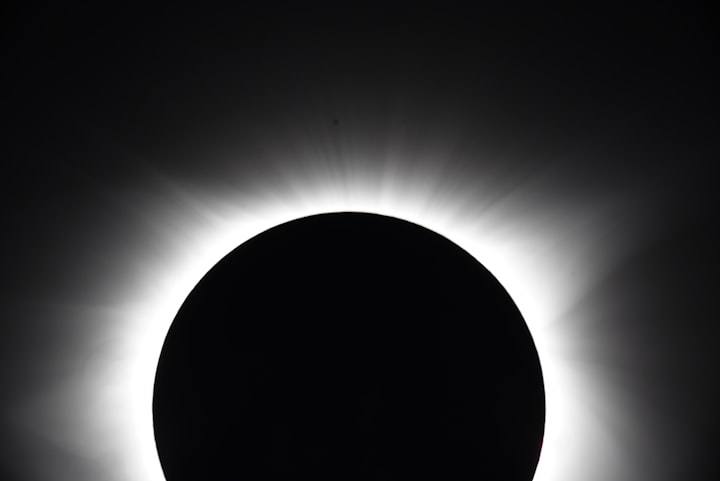Debunking the Earth and Sun Stationary Doubts :
Understanding the Science behind it

Introduction:
The discovery of other galaxies and the understanding that the universe is vast and complex. While the Earth may be an important planet for us, it is not the center of the universe.
There is also a common misconception that if the Earth were moving, then we would feel a constant force pushing us in one direction. However, this is not the case because the Earth is in a state of constant motion. We are moving with the Earth, so we don't feel any force pushing us in one direction. It's like how we don't feel the wind blowing on a moving car.
It's important to note that the idea that the Earth moves around the Sun is not just a theory or a hypothesis, but it is a fact supported by a vast amount of evidence. The scientific method relies on empirical evidence, and the evidence supporting the Earth's motion is overwhelming. It is based on observation, experimentation, and mathematical models that have been tested and verified over centuries.
The question of whether the Earth is stationary or moves around the Sun has been a topic of debate for centuries. Even though the scientific evidence overwhelmingly supports the idea that the Earth moves, there are still people who believe that it is stationary. In this article, we'll delve deeper into the scientific evidence that supports the idea that the Earth moves and debunk some of the common misconceptions that people have about it.
To begin, let's explore the history of the debate over the Earth's motion. In ancient times, people believed that the Earth was the center of the universe, and all other celestial bodies revolved around it. This was called the geocentric model of the universe. However, in the 16th century, a Polish astronomer named Nicolaus Copernicus proposed a new model that placed the Sun at the center of the universe, with the planets including Earth, revolving around it. This was called the heliocentric model.
Despite the evidence supporting the heliocentric model, it was not widely accepted until the 17th century when Galileo Galilei observed the phases of Venus and discovered the four largest moons of Jupiter. His observations provided empirical evidence for the heliocentric model and helped to discredit the geocentric model.
Now, let's look at the scientific evidence that supports the idea that the Earth moves. The first piece of evidence is the observation of the phases of Venus. Venus is visible in the night sky as a bright object, and its shape changes over time. This can only happen if Venus is orbiting around the Sun and not around the Earth. If the Earth were stationary, Venus would always be in the same position in the sky, and we wouldn't observe any changes in its shape.
The second piece of evidence is the observation of stellar parallax. Parallax is the apparent shift in the position of an object when viewed from two different locations. When we look at the stars from Earth, they appear to be in fixed positions. However, if we observe them from two different locations, we'll see that their positions appear to shift slightly. This can only happen if the Earth is moving around the Sun.
To understand why this is the case, imagine that you're looking at a nearby object, such as a tree, with one eye. If you then look at the tree with the other eye, the tree will appear to shift position slightly. This is because each eye has a slightly different perspective on the tree. The same thing happens when we observe the stars from different locations on Earth. The slight shift in their positions can only happen if the Earth is moving.
The third piece of evidence is the observation of the retrograde motion of the planets. Retrograde motion is when a planet appears to move backward in the sky. This happens because the planets are all moving around the Sun at different speeds. Sometimes, as the Earth passes by a slower-moving planet, it appears to move backward. This can be explained if the Earth is moving around the Sun and not the other way around.
Despite the overwhelming evidence that supports the idea that the Earth moves, some people still hold onto the belief that it is stationary. One argument they make is that we don't feel the Earth's motion. This is true, but it's because the Earth is so big that we don't feel its motion. It's like how we don't feel the motion of a car when we're inside it.
However, these arguments can be easily debunked. The lack of observable motion of the Earth can be explained by the fact that the Earth is a relatively small object compared to the vastness of the universe. Similarly, the idea that the Earth is at the center of the universe is a misconception that has been debunked by scientific observations and experiments.
Conclusion:
In conclusion, the Earth orbits around the Sun, and the evidence that supports this fact is overwhelming. The debate over the Earth or Sun stationary doubts has been ongoing for centuries, but with the advancements in science and technology, we now have a clear understanding of the science behind it. While some may still hold onto the belief that the Earth is stationary, the evidence suggests otherwise, and it is essential to acknowledge and understand the scientific truth.
About the Creator
Explore Tech
Explore your evironment facts and gain unlimited knowledge and many other useable informantion for you.






Comments (1)
good